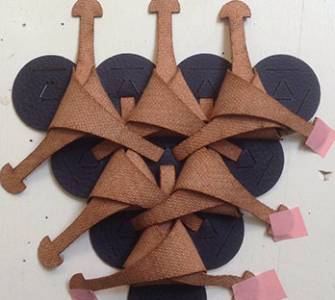Week 3: Circular Open Source Fashion / Zoe Romano

CLASS
This week, Zoe made an interesting class about how can we change the way we understand creation and distribution of fashion, by using new technologies involving software, hardware and data.
Open Design: Collaboration, sharing, efficiency, modularity, flexibility, open codes.
ASSIGNMENT
WHAT
“Modular Fashion: Modular approach to the production of accessories and garments using vector graphics and laser cutting. ”
Create an unique garment using laser cut modules on fabric, and then share the files open source.
INSPIRATION



STEPS
1. HAND DRAWING: I started with some drawings and paper cutting
2. RHINO: I translate the drawings to Rhino to get geometric modules. I use the commands “Rotate” and “Mirror”.
3. LASER CUT: I cut the first samples in a fake lather fabric 1 mm thick.
4. ASSEMBLY: Started playing with the modules and forms.
5. DESIGN THE GARMENT: After knowing how the modules work, I started designing the garment in Rhino following the pattern of a sweatshirt I have. I also chose the fabrics.
6. LASER CUT: Cut the finals modules and pieces for the garment.
7. ASSEMBLY: Assembly all the pieces. It took me around 2:30 hrs to finish everything.












THE RESULT








I LEARN:
- Create a module made of two parts, than can be use either flat o pleated.
- You have to consider the thickness of the fabric for the interlocks, more thin = more fragile.
- Use Rhino to design a garment and calculate the modules I need.
- Use modules to create tridimensional pieces.
PROBLEMS:
- You have to consider what to do with the modules in the endings of the garment.
- To many modules! I had to cut around 400 pieces..
- The waste material: For next time I`ll be more conscious about the material that`s in between the modules when you cut them out of the fabric.